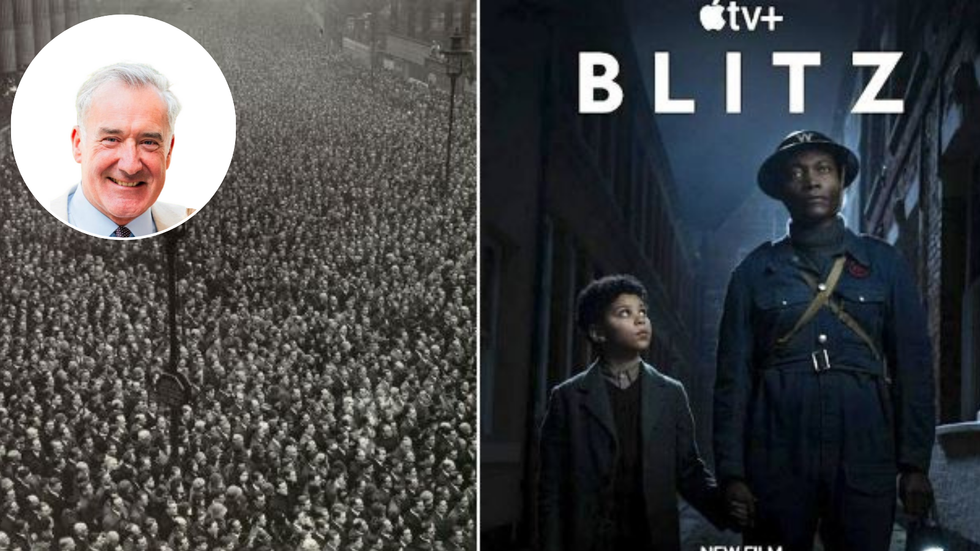My mother still remembers the first person she saw in the flesh, who wasn’t white. It was the 1960s and she was on the top deck of a bus. To her grand-children – my kids – such an idea seems odd, even heretical. Because anyone born after 2000 has been raised by the culture around them to consider multiculturalism, not as an ideological creed imposed on them from above, but an incontestable fact of life in Britain for centuries.
Or, if you believe the BBC’s Horrible Histories, Millennia. My mother, by the way, wasn’t growing up in some remote corner of England untouched by immigration. This was Bradford, a city that effectively became a de facto laboratory for race relations.
I thought of my mother’s account this week after posting a tweet about a new World War Two film from Apple TV. I wrote: “I understand why TV creatives tinker with our island story to render it more ‘inclusive’. But, by any rational measure, it seeds a lie that Britain was saved by people who weren’t white. It is historically illiterate and tediously corrosive.”
The post was accompanied by two pictures. One was a publicity-style shot, featuring a black air-raid warden holding the hand of a mixed race child. The other was a black-and-white photo, taken at the end of the war and showing a sea of white faces. Provocatively, I captioned these images: “The reality versus… the fiction.”
The last time I looked, the post had been seen more than 200,000 times, and liked by almost 8,000 users. There were some thoughtful comments, reflecting interest in a sensitive subject. But there was outrage too. ‘CensoredWoman28’ wrote: “Your ignorance and lack of education around the black British history is just evidence of the racism deeply rooted in our schools education system. We were there, you wrote us out, now idiots like you don’t even know their own history.”
Setting aside my own apparent idiocy and ignorance, how do we answer the claim that history has been ‘whitewashed’? It’s harder than you might think. It’s no good producing official historical statistics on ethnicity. They can dismissed as deliberately playing down numbers of non-white Britons.
But, as with so much Critical Race Theory, it cannot withstand its own internal contradictions. This, after all, is a worldview which debunks data – relying instead on ‘lived experience’. Well, my mother’s ‘lived experience’ is that it was possible to grow up in a city like Bradford and not see a person of colour until she was into her late teens in the early 1960s. Was she lying when she told me that? Is her memory at fault? Of course not.
But one day my mother’s generation will be gone, and their inconvenient truths with them. What happens then? I come back to the picture in my X post, the one showing thousands of white faces.

Apple’ TV’s rendition of the Blitz vs historic imagery – Colin Brazier
GB News
It’s a pretty fanciful conspiracist who could argue that black people were airbrushed from that picture, or denied the opportunity to appear in it. Anyway, in millions of homes across Britain, there is a photographic record, the work, not of some imagined racist historical censor, but of countless families.
They show that, in spite of what those responsible for depictions of our past might now say, to be non-white and British was to be – until the second half of the 20th century, rare indeed. Certainly much less common than allowed for in the imaginations of film directors, playwrights, advertising creatives and all those who feel an obligation to present Britain as perpetually multi-ethnic.
I understand the motivation. If I was, say, a young Bangladeshi-heritage boy sitting in school, learning about the Plantagenets, would a wholly white England feel like my country, my shared story? Kinder then, as the BBC producers of Wolf Hall have just done, to surround Henry VIII with black Privy Counsellors and give Cardinal Wolsey a daughter of South Asian appearance.
The instinct to do this may be driven by a desire for inclusivity. For all to have the prizes of British history. But the historical truth matters. And to assert that the presence of a handful of non-white Elizabethans or Georgians or Romans, creates a license to sprinkle actors of colour liberally, is to assume huge credulity on the part of the audience. Apart from anything else, viewers care about verisimilitude. Judging by how much time film-makers spend making sure costumes and settings look historically accurate, so do TV moguls. Except when it comes to colour-blind casting, when we are expected not to notice non-white numbers out of all proportion with reality.
Playing fast-and-loose with the demonstrable truth of ethnicity will always throw up problems for producers. Just look at Wolf Hall. In one scene, a diverse group of actors consider the latest news from Court. They do so standing in front of a magnificent tapestry, consisting entirely of white people. Presumably, it was going to cost the set-dressers too much to commission a ‘colour-balanced’ wall-hanging.
In our modern mainstream media, driven by ideology and aided by technology, it can no longer be said that the camera never lies. But, now and again, it struggles to conceal the whole truth. And, in spite of what my many critics on X may claim, pointing out these historical discrepancies is not an act of racism.